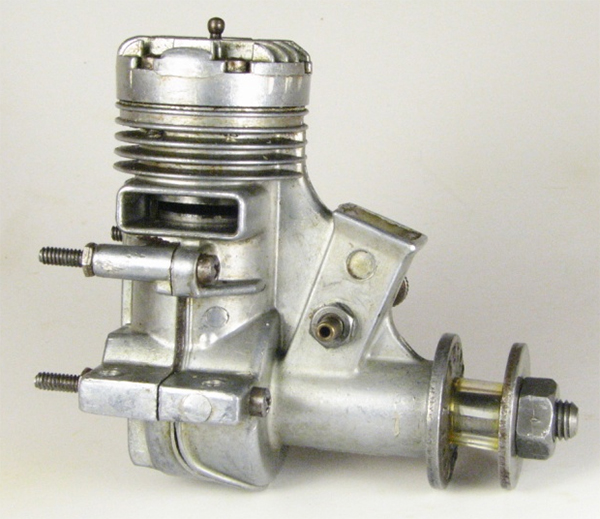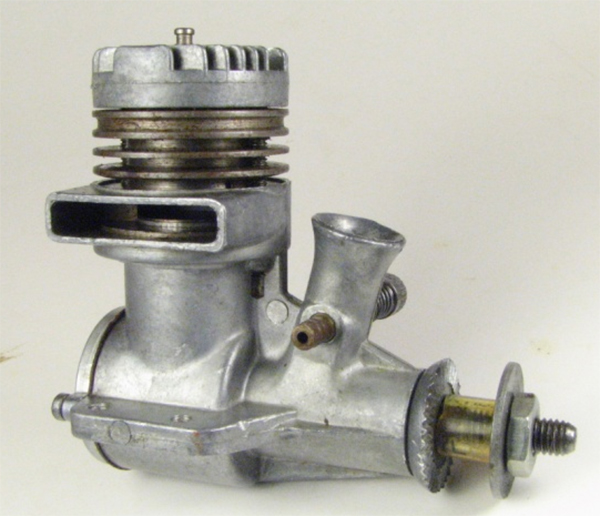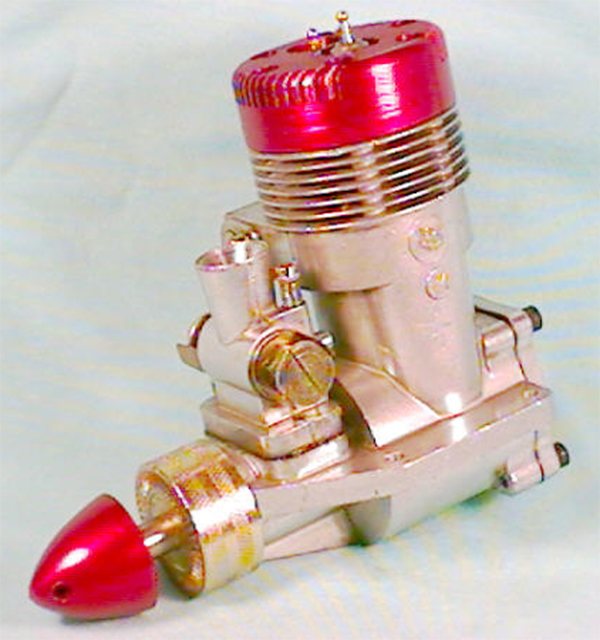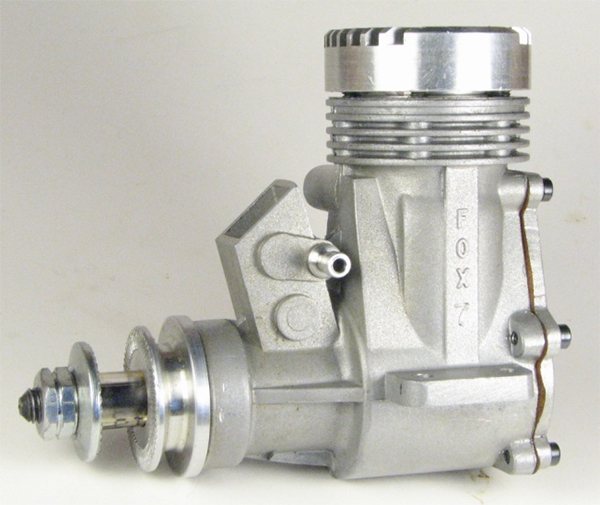Historical review of the Fox Engines
by Bill Mohrbacher
When writing of departed friends or companies, the late Ron Chernich (Australia, editor of Model Engine News) often titled his articles “Vale…” I finally looked this up and found besides “hill and vale,” Vale means “farewell”. Its use is uncommon now and indeed, it doesn’t seem to be listed in the latest dictionaries. But now you know how I am using it, I bring you this sad report:
From a Stunt Hanger thread dated February 4, 2014, came this letter from Fox Mfg., written earlier in 2014:
“In these tough economic times, Fox has had to retrench and focus our limited number of employees on the outside jobs that provide a profit. With the price of motors driven by the Chinese imports, Fox engine profitability is limited. At this time we don't have the ability to dedicate staff to our Fox engine department. When the economy improves and outside jobs increase, we’ll be able to resume engine production.
“Thanks for your support, Fox Mfg.”
There had been rumors of Fox leaving the engine business in late 2013, but this really confirmed things. December 4, 2013, I spoke to Sharon at Fox and bought the last Fox 40 Stunt engine in the shop. At that time she said no engines were being produced. Fox had advertised a booth at this year’s Toledo RC show, but never came to open it. This was the first time since 1967 when I started going to Toledo that Fox was absent. Then, on September 4, 2014, I thought I would buy one of the newest two NV throttles. Sharon said they were all gone. I asked if there were any engines in the building; she said no engines of any size or type were left.
And so after 67 years, Fox engines disappeared with a whimper, not a bang.
The factory is still open and making contract jobs that fit the capabilities of its equipment. In fact, for years this has been their major business. Model engines were really a minor line, but the company stayed with them. It would be wonderful if Fox made engines once again, but realistically does any market remain? Fox’s RC engines haven’t been popular, Control Line Combat, Duke’s first love, is flown by very few, and Precision Aerobatics (Stunt) fliers shun the old Stunt 35 and use foreign .25s and custom-made .61s. Of course, these situations refer to those still using internal combustion engines, but the use of electric motors grows every day further reducing any potential market for IC engines.
For those new to our great hobby, a brief look at Fox follows. A project to catalog and picture the various Foxes led to identifying 306 engine designs produced from 1947-2006. This project was carried in eight issues of the Engine Collectors Journal, numbers 161, 162, 163, 164, 170, 172, 174, and 175. (Tim Dannels may still have these back issues available at www.modelenginecollecting.com.)
Only some of the more significant engines are shown here. As a side note, Duke Fox was very particular about naming some things. His products were “motors”, not engines. They could be quieted by using “silencers,” not mufflers. And his marine engines were “boat motors.”
In the August 1947 Model Airplane News, a new engine was advertised by the Claude C. Slate Company, the Fox .59. This was Duke Fox’s first design and as he had no factory at the time, Claude Slate built and sold the .59. The engine was very light and very powerful and ran on sparkplug ignition; the glow plug wasn’t around when the .59 was designed before World War II. We collectors call this engine the .59 Longshaft and it is highly desired.

First ad for the Fox 59

Fox .59 Longshaft

Nov. 1947- first ad for the Arden Glow Plug
Ray Arden commercially introduced the glow plug in November of 1947. Fox designed a light, compact, and powerful glow engine engine for Control Line fliers in 1948: the legendary Fox 35. Control Line was becoming more and more popular and Stunt fliers eventually adopted this engine, later called the 35 Stunt. I think this was the first engine on the market designed from the start as a glow plug engine. Duke Fox built the first 35s in his mother’s garage or basement and distributed them by word of mouth. At that time he was the Fox Engineering Laboratory. Fox realized he wasn’t a machinist and teamed up with Dale Arnold to form the Arnold and Fox Engineering Co., first advertising the Superpower Fox 35 in November of 1949.

Instructions for the first Fox 35

The first Fox 35

The first Arnold and Fox ad August 1949 Model Aviation News

The last Stunt 35
The 35 was continually modified over the years with the 60th anniversary engine marketed in 2008; this was the last Stunt 35. Most internal parts are interchangeable with the original engine! In 1953 Fox marketed the Split Case 19; so called for its two-piece case. The case was very weak, breaking under the exhaust stack in a crash. Fox asked owners to send him their Split Case engines and he installed all the old parts in a new one-piece case—maybe one of the first recalls in the USA in 1954! Control Line Carrier and RC, both requiring speed control, were becoming popular in 1954 and Fox introduced his 19, 25, 35, and 59 in two-speed versions. They used two needle valve assemblies—one for high and one for low speed. There were many schemes for controlling the fuel flow. In 1953 Fox and Arnold split up and Duke continued on his own as the Fox Manufacturing Co. In 1955, Fox moved from Varna Avenue in North Hollywood, California, to Fort Smith, Arkansas, where it remains today. Performance engines always interested Fox and in 1956, he introduced the Bathtub 29R, so called for its huge intake. The first version had a unique, two-plug head.

1953 Fox .19 Split Case


1954 Fox 25 two-speed

1956 Fox 29R Bathtub
Smaller engines were popular and in 1958-1964 Duke produced a .15, an .09, an .07 for Comet plastic RTFs, a .10, and finally an .049.

1958 Fox .15 Rocket

1959 Fox .09 Rocket

1960/61 Comet (Fox) .07

1962 Fox .10

1964 Fox .049
Duke’s other performance loves were Combat engines. His first Combat Special was out in 1957 and his last Mark VII in 1994. But possibly his most innovative engines were the 1960-1962 Series 3 Combat Specials (and 29Xs) with their twin needle-bearing crankshafts, two-piece crankcases, and huge 3/8-inch square intakes for running with pressure fuel systems.

1960 Fox .35 Series 3 Combat Special
In 1962 when the AMA wrote the Rat Race rules to allow up to a .40 cid displacement, Fox stroked his .35 from .700 to .790 to create the world’s first .40 cid engines. To account for the extra stroke, the liner had to be lengthened, thus the heads on the .40s sat noticeably high than those on the .35s. The next year Duke began his throttle experiments in earnest, probably putting a new throttle on the market every year or so! The 1962 .40 RC is one of the most bizarre!

1962 .40 RC
In the mid 1960s, Fox started work on an ultimate RC engine with twin BB crankshaft, needle bearings on both ends of the conrod, hardened cylinder, twin-ring aluminum piston, and a carburetor with three adjustable jets. Finally ready for the market in 1967 in .60 (blue head) and .74 (red head) sizes, AMA made the .74 worthless by mandating a .60 maximum engine size. The .60 was a nice engine, but heavy for a .60; the .74 was Fox’s real flagship. Duke stroked the .74 and created the Fox .78. It became popular with Scale fliers and lasted clear into 1981, but it is doubtful the few sales to Scale modelers recouped the development costs.

1967 Fox .60 RC

1967 Fox .74 RC

1981 Fox .78 RC
Schnuerle porting became popular in the 1970’s and in 1975 Fox designed his B (Big) case engines with their unusual Coffin rear cover to allow for casting rather than expensively machining Duke’s interpretation of this porting. These engines all had bolt-on carburetors, pressure and suction versions for CL, small and large throat for RC, BB and bushed crankshafts, lapped iron/steel, ringed aluminum steel, and ABC piston cylinders. Some variety, huh! Improved versions of this engine are (were) still sold as the current 45BB RC.

1975 Fox .45 BB
In 1976 a C (Compact) case was developed using a fixed venturi with drop in carb and the 6 bolt “Coffin” rear cover. Over the years it was made in .29, .36, and .40 cid, bushed and BB cranks, CL and RC, lapped iron/steel, ringed aluminum/steel, ABC, and AAC, sport CL, combat, and RC versions, this engine is (was) currently made in only .40 variations, one of Fox’s more successful designs.

1981 Fox .36 MK IV Combat Special

1983 Fox .29 BB Schneurle (Series 5)

1994 Fox .36 MK 7 Combat Special
In 1979, Fox dropped the svelte Eagle .60 and marketed the Eagle II, a brawny thing with a two-piece crankcase, and large shaft with extra-large bearings. By grafting two of these together with a special center section and crankshaft, the 1.2 cid Twin was created. An improved Eagle III followed and finally the Eagle 4 with a one piece crankcase was born. Also sold in a .74 size, the Eagle 4 was Fox’s last large engine.

1973 Fox Eagle .60 RC

1979 Fox Eagle II

1979 Fox 1.2 Twin

1994 Fox Eagle 4 .74 Ring

1983 2.98 cid Fox Bicycle Motor

1976 Fox .45 Boat Motor

1991 Fox Eagle 4 .74 Helicopter Motor

About 1992 Fox .15 Car Motor
I hope you have enjoyed this short history of Fox Engines, the last of the original mass-market American model engine manufacturers. —Bill Mohrbacher







Comments
Webpage Comments
I used Fox engines for years, even when not a popular choice with other fliers, they always served me well. Of course I read the instructions, understood they needed to be broken in and always used Castor based fuels- even if not Fox brand. I miss Duke Fox, his engines ("motors") and hope that MECOA will represent the Fox name as well as it deserves.
Time will tell.
In the interim, I buy what I can on Craigslist and eBay and enjoy Fox engines as they were designed and made by Duke Fox & Fox Manufacturing; he was a great name in the model airplane hobby and is sorely missed.
Always have liked Fox engines
I've got a couple in my stash and both run amazingly well. I have an 049 FAI that I've modified a bit; COX 3-fin glow head and COX airbleed carb for full RC operation. Thing runs and transitions like a .15! And I've got a .45 RC Ringed that I got totally siezed for like 20 bucks yet also runs like a swiss watch. Lovely engines, Duke really knew what he was doing!
https://youtu.be/OwaRTsSP9fM
https://youtu.be/ZitMhzi8Ekk
Owner and photographer of most engines shown in article
Doug Martin began the history of fox Manufacturing Model Engines with coaxing from Tim Dannels Other modelers wrote history of almost all know model engines. The Fox Engine was started by many but not finished because of the large number of production engines, 307 or more. Bill Mohrbach president of the Model Engine Collectors Association contributed the most along with John Hall on the present pictures with special engines from Bill Ives. Majority of. Photographed in American Model Engine Encycloperdia are engines from Doug Martin.
Add new comment